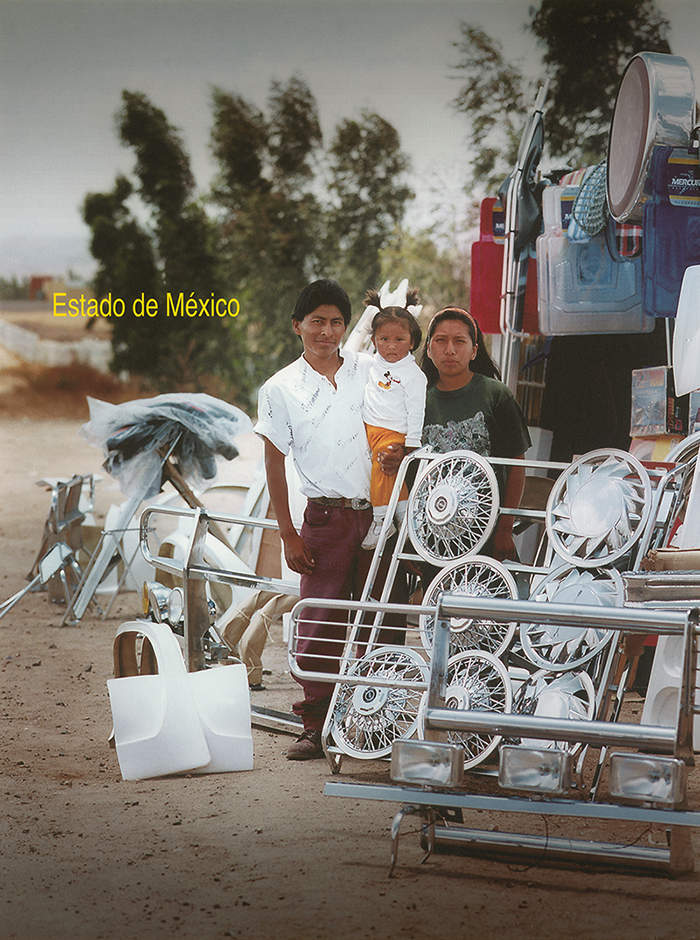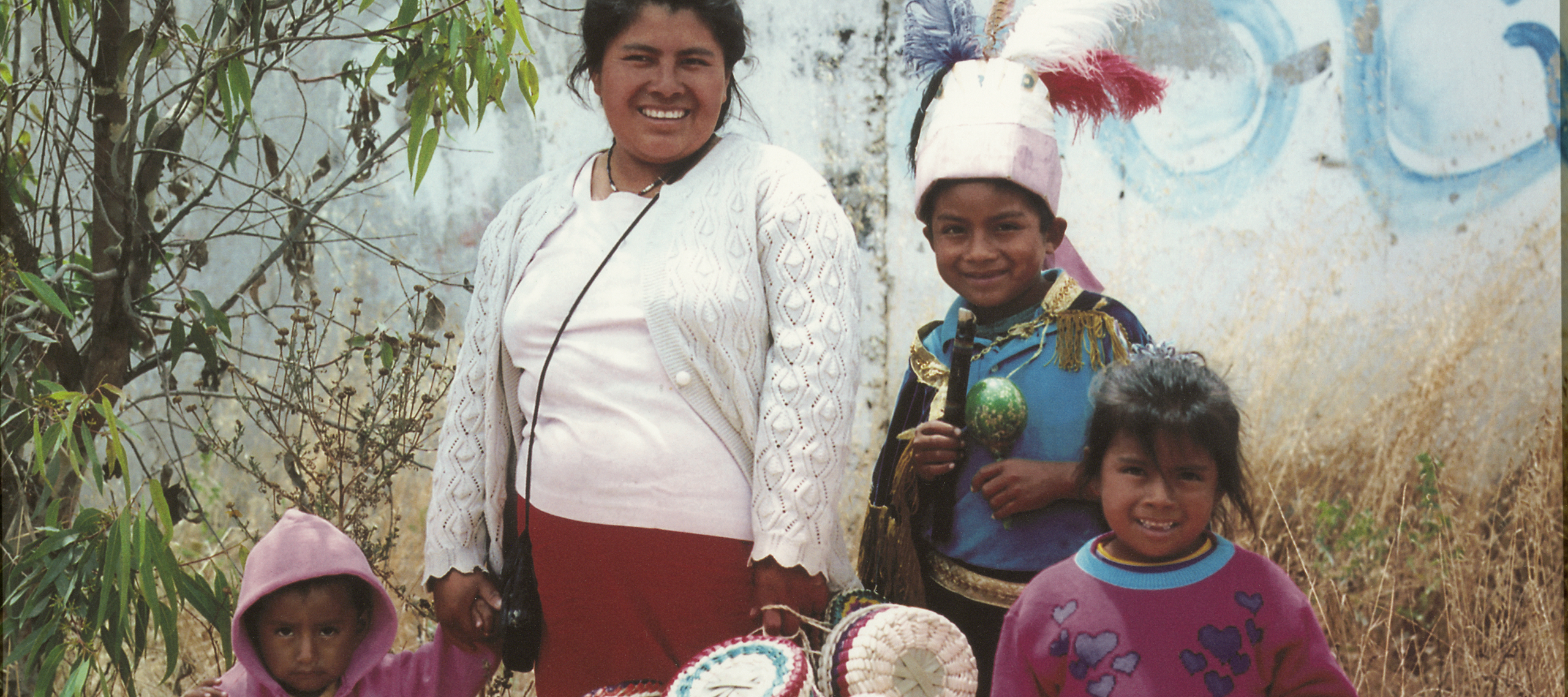Brazilian artist Rosângela Rennó (b. 1962) works with discarded photographs found in flea markets, family albums, newspapers, and public archives to question the nature and symbolic value of an image. Her works shed light on the overlooked narratives of everyday people, including migrants and immigrants, throughout history and in times of political and social unrest.

Share your favorite women artists working for immigrants’ rights on Instagram, Twitter, and Facebook using the hashtag #5WomenArtists and tagging @WomenInTheArts.
1. The Ghosts of Brasília
In 1994, Rennó created the installation Immemorial for the group exhibition Relooking at Brasília. Instead of celebrating Brazil’s capital city, built rapidly between 1957 and 1960, Rennó faced its dark history. Overwhelming numbers of the project’s migrant workers—including women and children—fell to their deaths from the construction scaffolding. Rennó mined 50 worker identification photos from forgotten files and arranged the portraits like graves in a cemetery. Immemorial represents “a redemptive gesture, a resurrection of fallen bodies, those sacrificed in the building of the future.”
2. United States (Mexican Series)
Rennó worked with wedding portrait photographer Eduardo Zepeda on United States (Mexican Series) (1997–99), a public art project first displayed in shop windows in Tijuana, Mexico, and San Diego, California. This suite of photographs shows people who had journeyed to Tijuana from Mexico’s 16 states, presumably to cross into the U.S. They are photographed in front of their workplaces in Tijuana, and an accompanying map indicates their places of origin. The work’s title deliberately, and ironically, alludes to the longstanding conflict surrounding migration and the heavy policing of the U.S.–Mexico border.
3. Reflections on a Colonial Past
In her video Vera Cruz (2000), Rennó appropriates a letter written by Portuguese knight Pêro Vaz de Caminha in 1500 about “discovering” Brazil. Rennó translated the letter into subtitles that play over a bleached background filled with scratches. The blank film alludes to the inability of the European and Indigenous peoples to understand each other. While Caminha’s letter has been described as reflecting “a deep sense of humanism,” history shows that colonization “brought about a savage suppression of traditional ways and freedoms.”
4. Hidden Histories
In 2016, Rennó presented Rio Montevideo, featuring images from the salvaged archives of the Uruguayan newspaper El Popular (published from 1957 to 1973). Photojournalist Aurelio González hid 48,626 negatives in the walls of the paper’s office to “save a record of the nation” before Uruguay’s military coup in 1973; this evidence of daily life and political unrest likely would have been destroyed otherwise. Her work raises compelling questions: What other visual narratives throughout history have been lost, hidden, or destroyed? Whose stories are not told?
5. Relearning to See
“The world will always have too many photographs,” Rennó has said. By working with found imagery, the artist brings new consideration to forgotten images and invites viewers to look closely. Perhaps, in that act, viewers can develop a deeper understanding of history’s obscured narratives and, in Rennó’s words, “the little stories of the downtrodden and the vanquished.”
